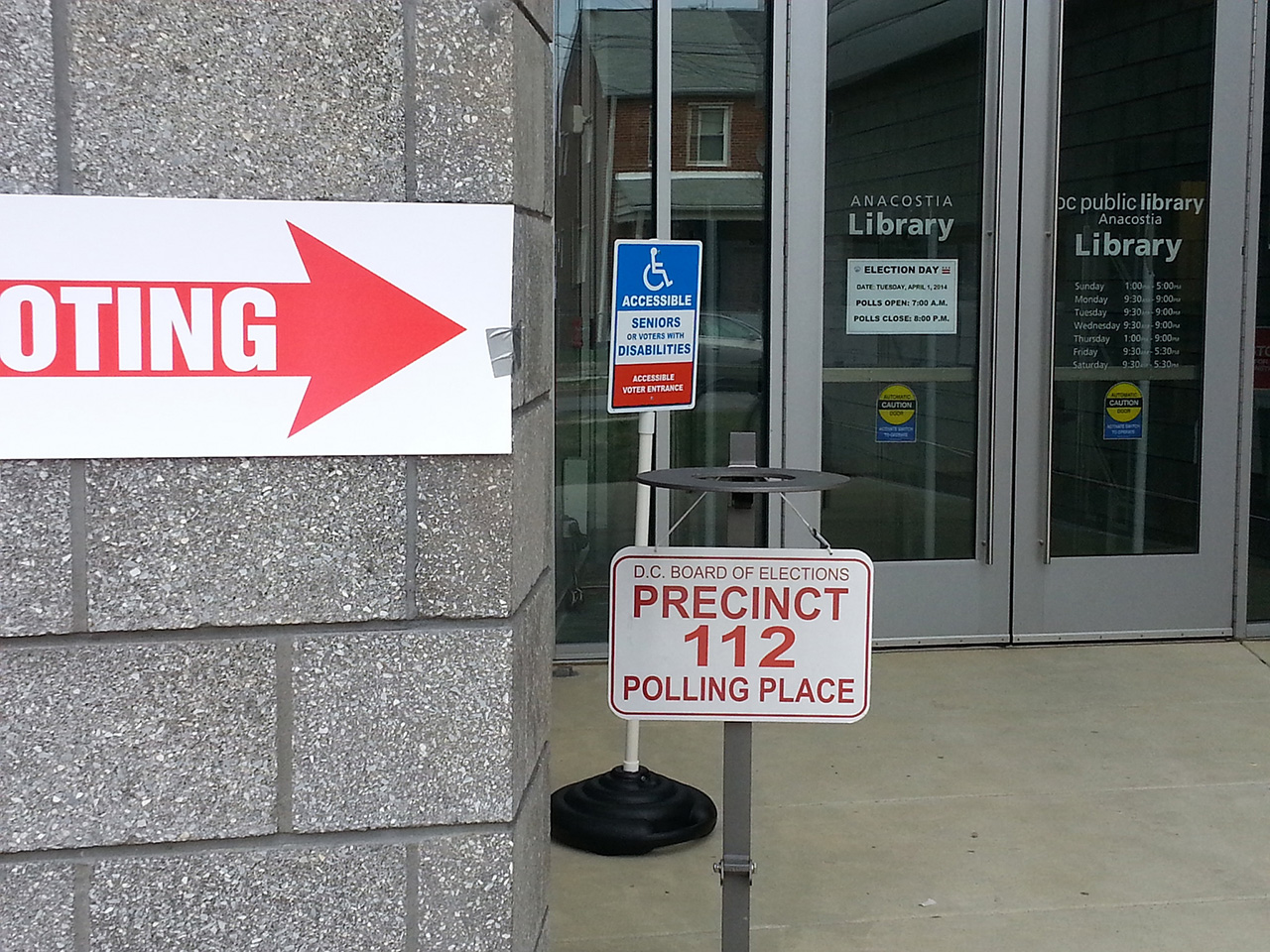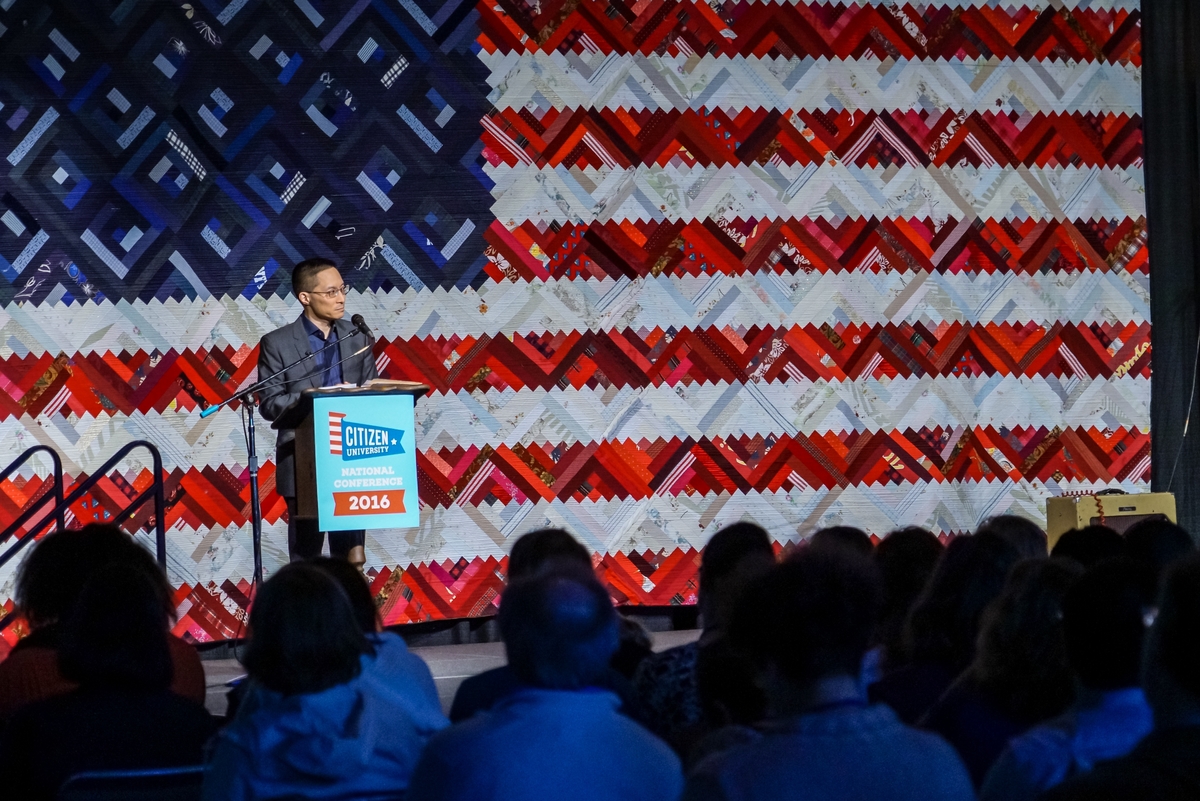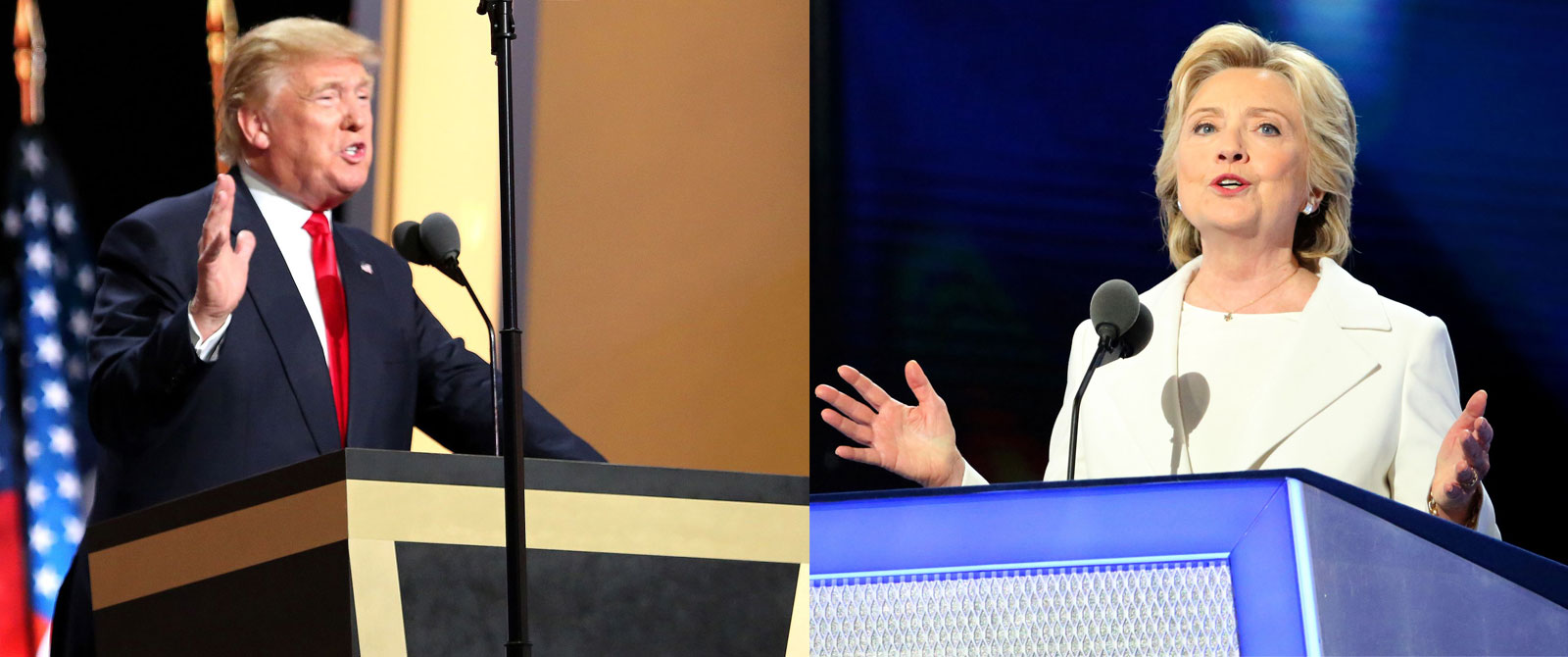
Two things you should know about the media and the 2016 presidential election
Nicco Mele is director of the Shorenstein Center on Media, Politics and Public Policy at the Harvard Kennedy School.
What is the role of the news media in the 2016 presidential election? That’s the question Professor Tom Patterson has set out to examine in a series of papers funded in part by Knight Foundation. Today we’ve released the third paper, “News Coverage of the 2016 National Conventions: Negative News, Lacking Context,” which focuses on the news coverage of both candidates in and around Democratic and Republican conventions this past July.
The study examined more than 7,000 news statements from six daily newspapers and five television networks. For each statement, we identified relevant themes (topics) and actors and evaluated the tone (positive or negative) on a six-point scale. Here are two conclusions from the recent study:
- We are obsessed with polls, and it’s killing us. Across all three studies, all candidates and all outlets, polling-related coverage dominates – far outpacing coverage of issues, policies or even personal qualities. Stories about polling tend to make a value judgment about a candidate based on their position in the “horse race” of the polls. For most of 2015 and the first half of 2016, the coverage of position in the polls helped Donald Trump and hurt Hillary Clinton; Trump had many news stories about how he was rising in the polls, while Clinton had many news stories about how Bernie Sanders was catching up. During the convention coverage, the horse race stories were not as positive for Trump – but even so they were a bright spot. Whereas his horse race coverage was 2-to-1 negative for the convention period, news statements about his issue and policy stands were 7-to-1 negative.
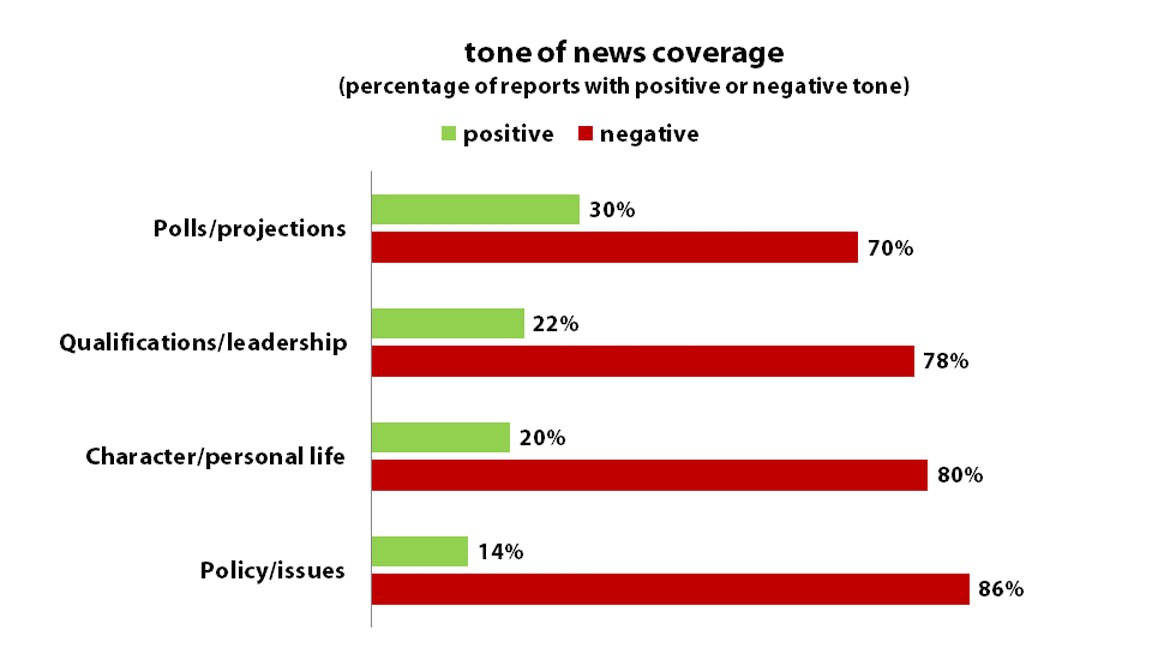
- Hillary Clinton’s press coverage continues to be overwhelmingly negative. Throughout 2015 and most of 2015, news coverage of Hillary Clinton has been mostly negative – in part of the same reasons: horse race/polling. “Bernie’s catching up! He’s gaining on her! David vs. Goliath!” But with Clinton there is a deeper strain of bias not easily explained away by an obsession with polls. During the convention period, reporters quoted Donald Trump more often about her policies than they quoted her. While emails and other alleged scandal references accounted for 11 percent of Clinton’s news coverage, her policy positions were barely noted. Not a single Clinton policy proposal accounted for even 1 percent of her convention-period coverage and, collectively, her policy stands accounted for a mere 4 percent of it. Perhaps more important, despite her accomplishments as first lady, U.S. senator and secretary of state, her qualifications to be president are absent from the bulk of the reporting.
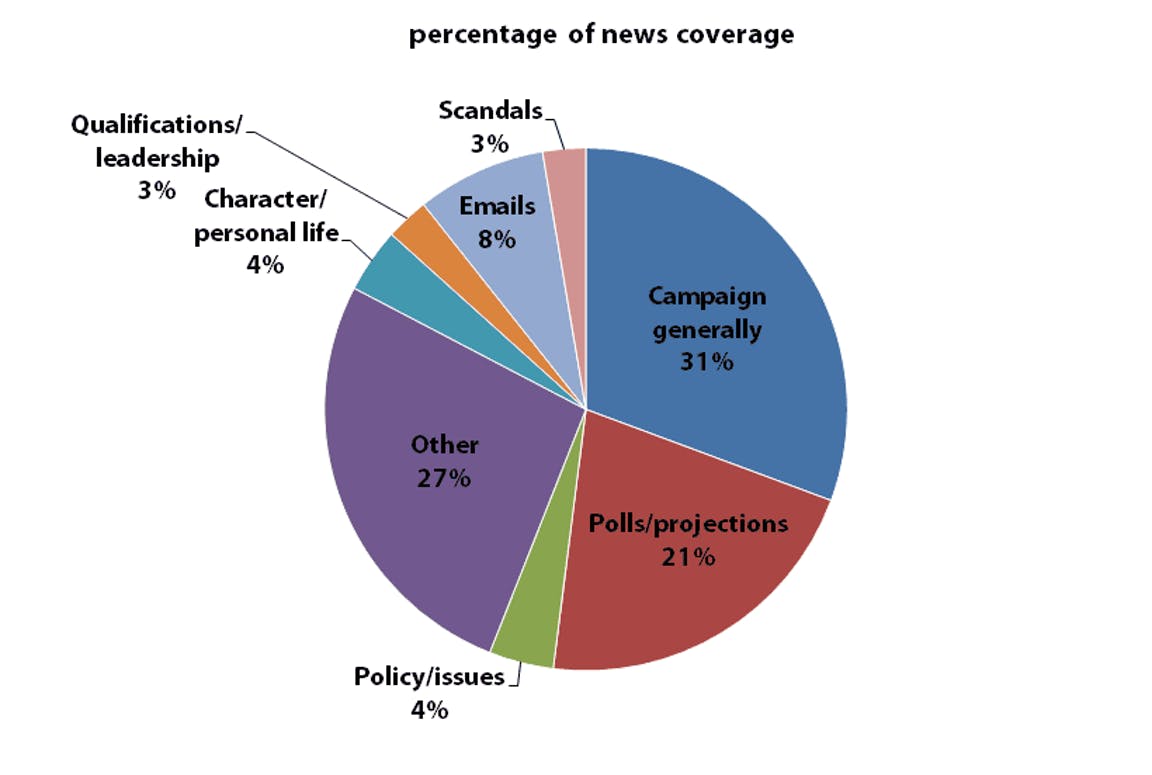
To be clear, the press coverage is not to be “blamed” for this election – but it could certainly do a better job. The media is responding to newsworthy stories and a long election cycle where keeping the public’s attention is a challenge. Moreover, market forces make the competition for audience fierce. Ultimately, the political process needs substantial reform. But by examining the data and assessing the potential for bias, we hope to encourage substantial discussion about the values of journalism and the role of the media in a tumultuous election season.
-
Information and Society / Report
-
Community Impact / Article
-
Community Impact / Article
Recent Content
-
Journalismarticle ·
-
Journalismarticle ·
-
Journalismarticle ·

